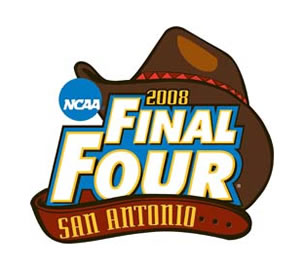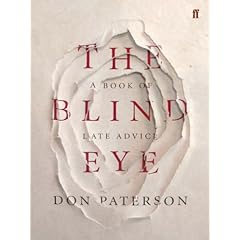Almost 10 years ago, Kelly Easton, George Nemhauser and I created something called the Traveling Tournament Problem. The name is George’s: I wanted to call it the Problem where Teams Play a Round Robin and Travel and Stuff, but George’s name is catchier. The problem came from work we had done with Major League Baseball in creating their schedule. Rather than try to post 150 pages of requests and requirements (which MLB would never let us do anyway), we abstracted out the key aspects of the schedule. Those were:
- Travel: a wish to keep the total travel down, and
- Flow: a wish not to be home or away for more than 3 series consecutively.
I also added a “no repeat” constraint: if A is at B, then B cannot be at A in the next time slot.
When we put this together, we also put together the website http://mat.tepper.cmu.edu/TOURN to keep track of results and that turned out to be a great idea. By having one site with results and instances, it has been easy to keep track of “current records”.
When I first worked on this, my goal was to show how some of our methods that we use for MLB could handle problems of reasonable size for the Traveling Tournament Problem. That turned out to be impossible to do. The Traveling Tournament Problem is hard! Even solving the eight team problem turned out to be nontrivial. Six teams is doable with a bit of work.
Kelly Easton, in her dissertation, put a lot of effort into the TTP, and even solved the eight team problem. She used a network of 20 computers over the course of a week to prove optimality. Unfortunately, she did not include the “no repeat” constraint, so we didn’t have the result for exactly the right problem. While we believed that adding the “no repeat” constraint wouldn’t affect things too much, Kelly graduated, began working (for my small sports scheduling business) and we never solved the real problem.
Despite lots and lots of people working on the TTP, proving the optimality of a known solution to NL8 with value 39721 has been elusive. In fact, relatively little (but some, thanks to Melo, Ribeiro, and Urrutia) work has been done on improving lower bounds.
I was thrilled yesterday to get an email Stefan Irnich of Aachen who, together with his master student Ulrich Schrempp, claims to have proved the optimality of 39721. But here is when it gets hard. How do I know? It is easy to check feasible solutions, but unless there is a simply calculated lower bound, it it hard to confirm optimality. Fortunately Stefan sent the slides of his work, and it seems clear that the approach they are taking is one that would work, and would be stronger than what others have tried. So I have no hesitation in proclaiming that NL8 is now solved! I am sure there are easily dozens (OK, half-dozens … OK, a half-dozen) people who are excited about this, and I am one of them (and it is my blog).
On to NL10!
 The lecture is named after Len Arnoff, best known for his 1957 book “Introduction to Operations Research” with Churchman and Ackoff, one of the first (
The lecture is named after Len Arnoff, best known for his 1957 book “Introduction to Operations Research” with Churchman and Ackoff, one of the first ( Payscale.com has the
Payscale.com has the  Why is he my favorite player? It has to do with operations research, of course. Russ received his undergraduate degree from Princeton (he is the third Princeton graduate to play in the majors) in operations research. From the New York Times
Why is he my favorite player? It has to do with operations research, of course. Russ received his undergraduate degree from Princeton (he is the third Princeton graduate to play in the majors) in operations research. From the New York Times  Growing up in Winnipeg, Canada (city motto: “At least it is a dry cold”), I had a short and rather forgettable hockey career (though getting a shutout as a goalie at 12 years old remains one of my favorite memories). I have been greatly outdone by my nephew Mathieu, who actually looks like he knows what he is doing when facing a shot. Since then, I follow hockey mainly through my local team, the Pittsburgh Penguins. I have been lucky to see a number of amazing players on the Penguins: Lemieux, Jagr, and
Growing up in Winnipeg, Canada (city motto: “At least it is a dry cold”), I had a short and rather forgettable hockey career (though getting a shutout as a goalie at 12 years old remains one of my favorite memories). I have been greatly outdone by my nephew Mathieu, who actually looks like he knows what he is doing when facing a shot. Since then, I follow hockey mainly through my local team, the Pittsburgh Penguins. I have been lucky to see a number of amazing players on the Penguins: Lemieux, Jagr, and  After a very successful year, my fantasy football teams are crashing and burning in the playoffs. For those who do not know fantasy sports, fantasy football involves a group (8-12 people) drafting NFL players at the beginning of a season. Each week, my team gets points based on the success (or lack thereof) of the players in their “real” games. If my players get more points than my opponent’s, then I win. After a regular season, the best fantasy teams in the league then face off in the playoffs. Some fantasy sports work a bit differently: most fantasy baseball leagues collect statistics from the entire year and give points in the final year standings on the categories, without the head-to-head matchups.
After a very successful year, my fantasy football teams are crashing and burning in the playoffs. For those who do not know fantasy sports, fantasy football involves a group (8-12 people) drafting NFL players at the beginning of a season. Each week, my team gets points based on the success (or lack thereof) of the players in their “real” games. If my players get more points than my opponent’s, then I win. After a regular season, the best fantasy teams in the league then face off in the playoffs. Some fantasy sports work a bit differently: most fantasy baseball leagues collect statistics from the entire year and give points in the final year standings on the categories, without the head-to-head matchups. The October 6, 2007 edition of
The October 6, 2007 edition of